Abstract
OBJECTIVE: This study explored a group of primary care physicians' use of various methods to bridge language and cultural barriers between themselves and their patients and the physicians' perceptions of the availability and quality of these methods. METHODS: The authors mailed a questionnaire to 495 primary care physicians in the Greater Bay Area of northern California, an area chosen for its ethnically diverse population. Respondents were asked to estimate how many patients they saw per week, how many encounters they had per week with non-English-speaking patients, and how often they used each of six interpretation methods. They were also asked to assess the availability and quality of interpretation services. RESULTS: Physicians reported that, on average, 21% of visits were with non-English-speaking patients. Trained medical interpreters or the AT&T Language Line were used, on average, in fewer than 6% of these encounters, and no interpreters were used in 11%. In 27% of encounters with non-English-speaking patients, the physician could speak the patient's language, in 20% interpretation was done by a staff member who had no formal interpretation training, and in 36% a family member or companion of the patient interpreted. Physicians who had access to trained interpreters reported a significantly higher quality of patient-physician communication than physicians who used other methods (P < 0.0001). CONCLUSIONS: In an area of great ethnic diversity where physicians who had access to the services of trained interpreters reported a significantly higher quality of patient-physician communication, the low rates of use of trained interpreters suggest that factors other than quality, such as costs, preclude greater use of these services.
Full text
PDF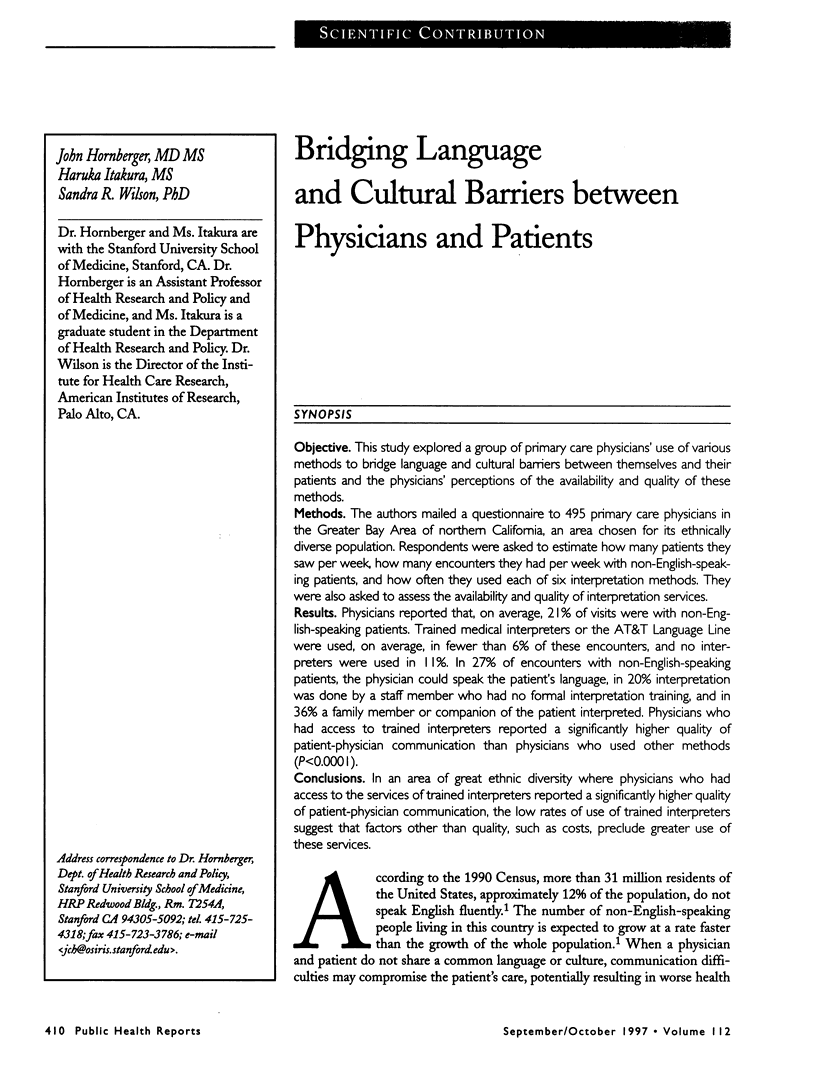
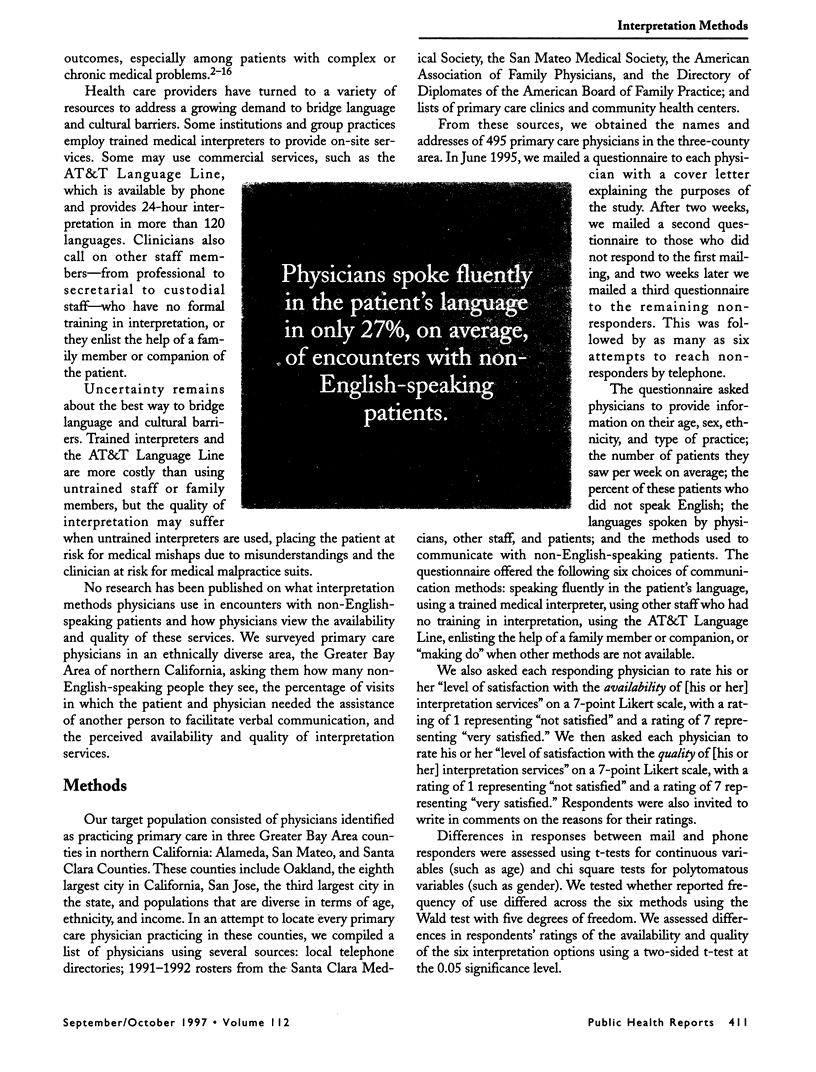
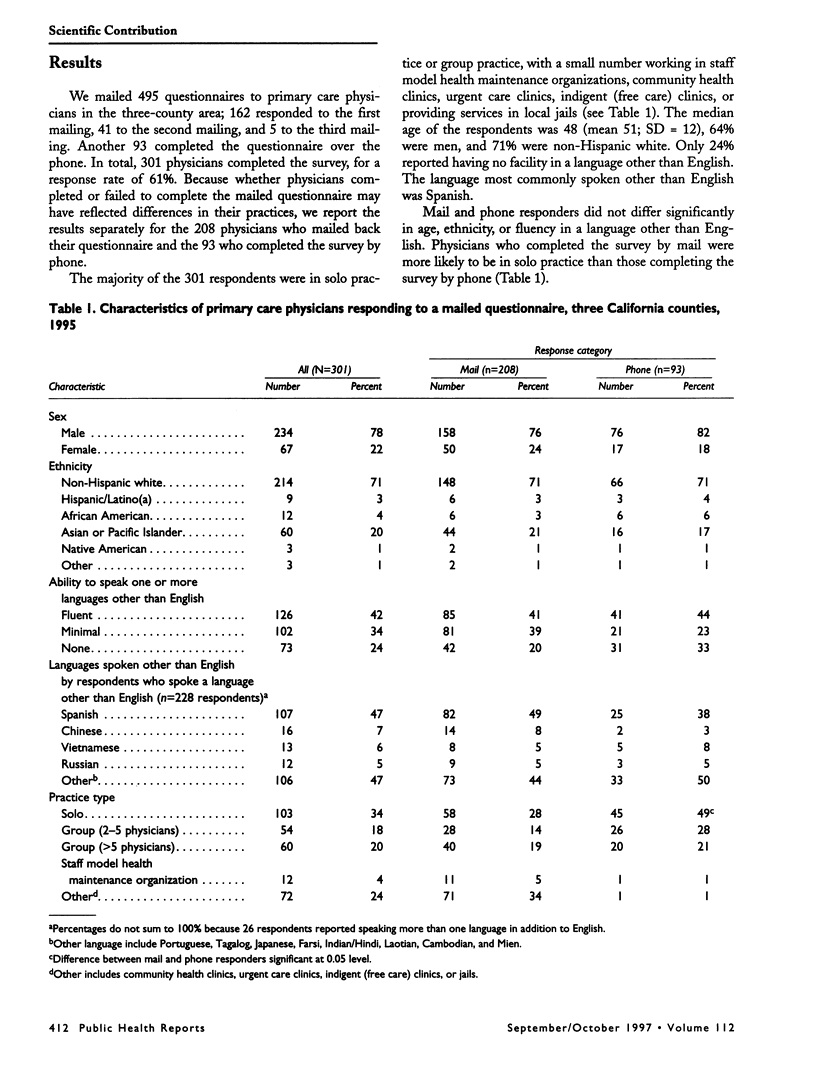
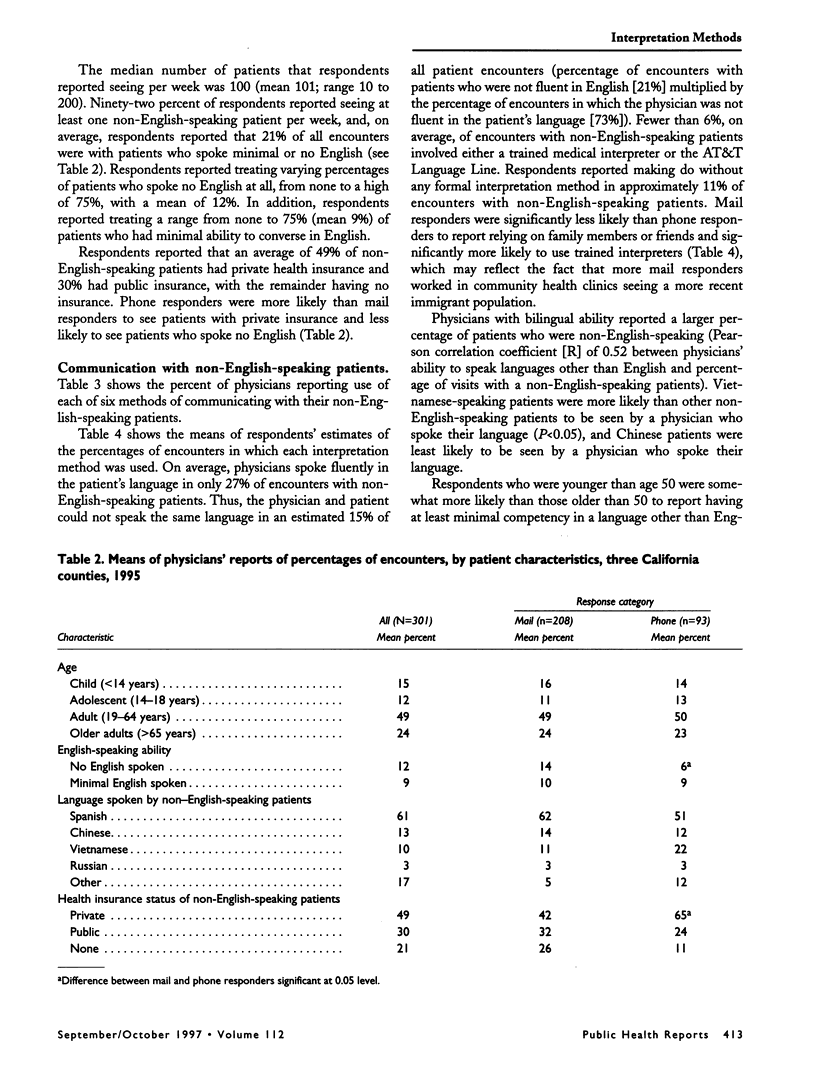
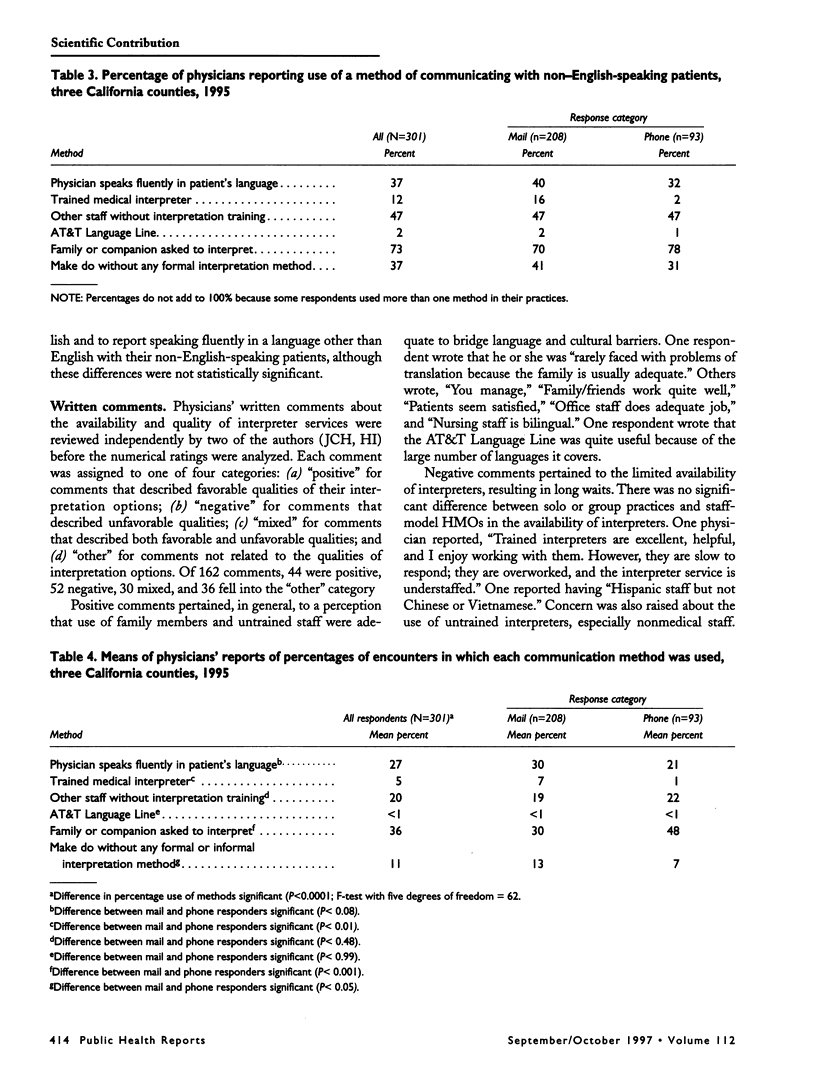
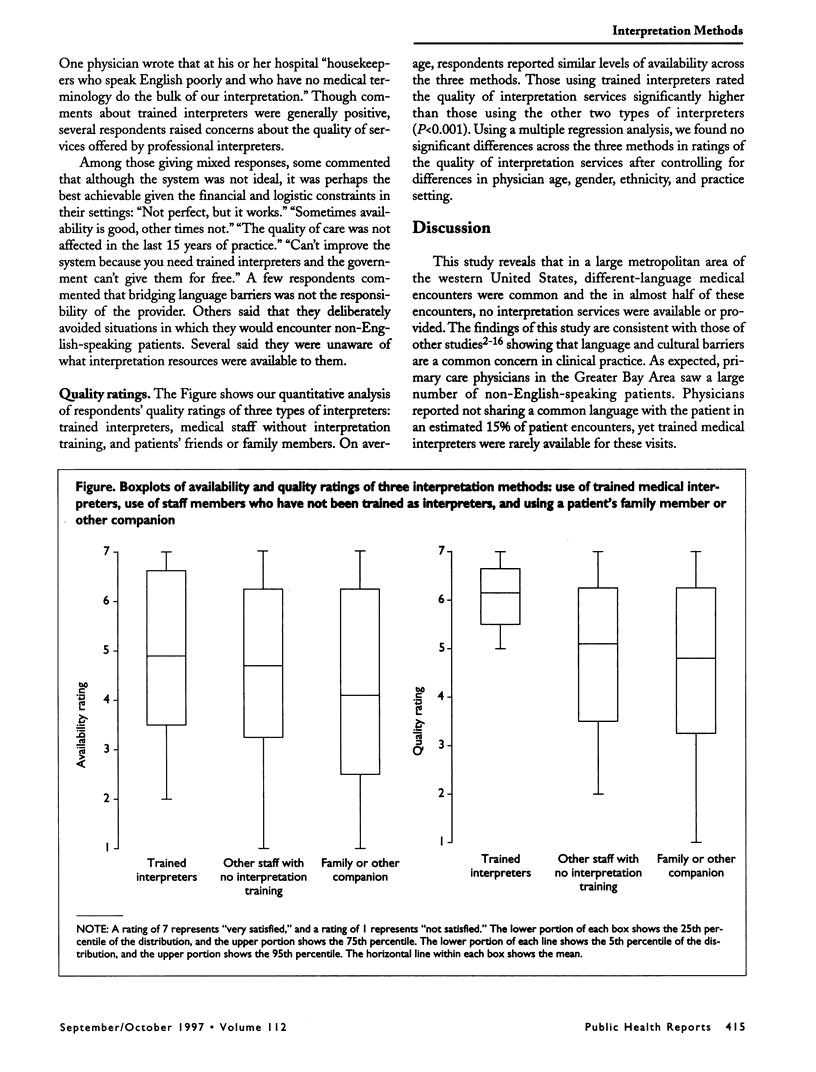
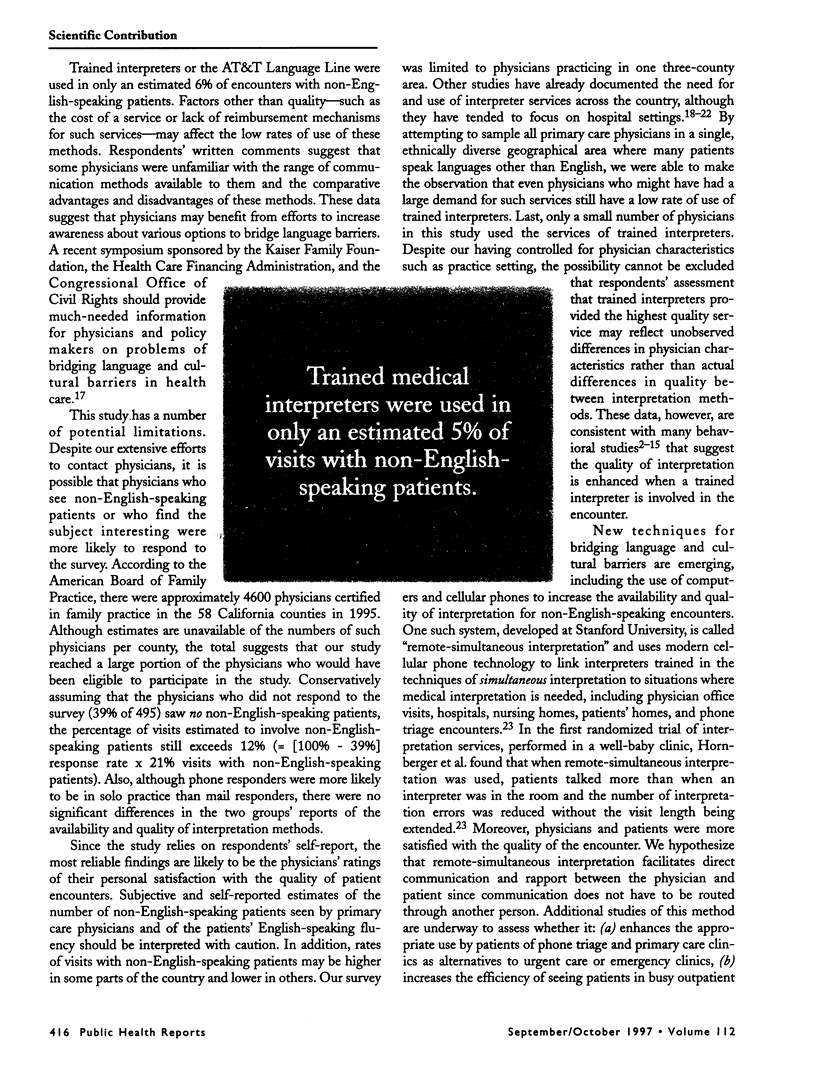
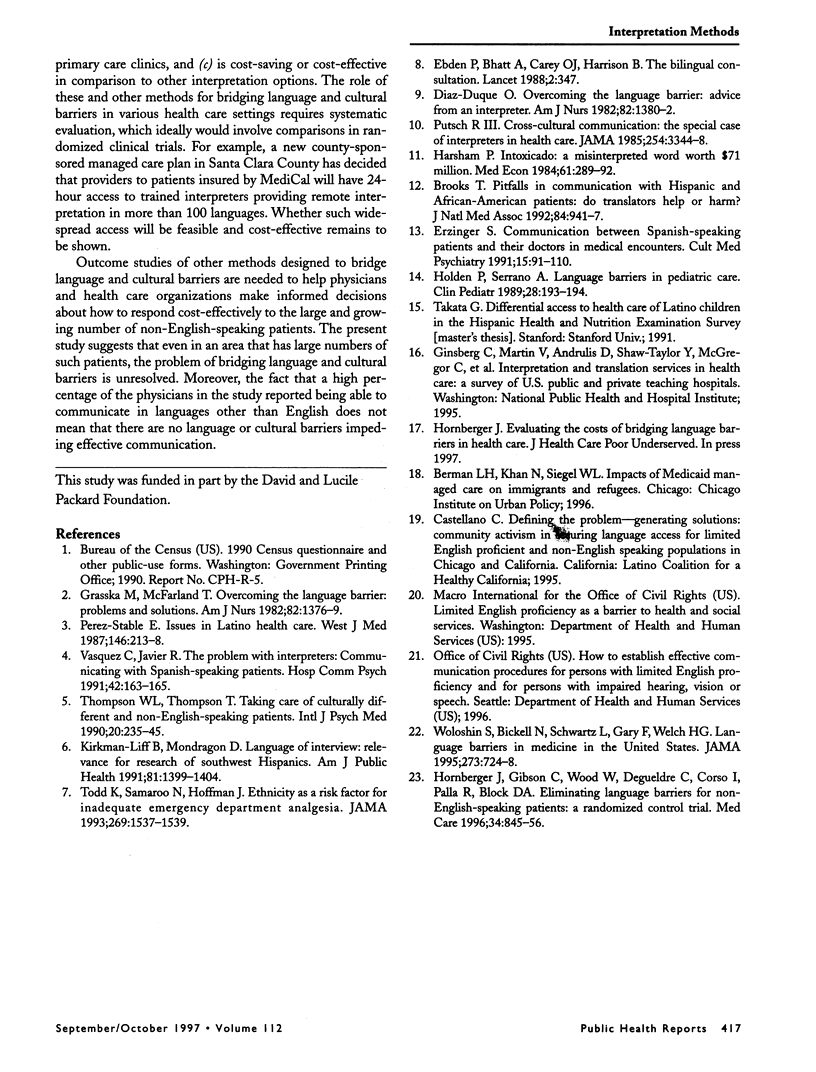
Selected References
These references are in PubMed. This may not be the complete list of references from this article.
- Brooks T. R. Pitfalls in communication with Hispanic and African-American patients: do translators help or harm? J Natl Med Assoc. 1992 Nov;84(11):941–947. [PMC free article] [PubMed] [Google Scholar]
- Díaz-Duque O. F. Overcoming the language barrier: advice from an interpreter. Am J Nurs. 1982 Sep;82(9):1380–1382. [PubMed] [Google Scholar]
- Ebden P., Carey O. J., Bhatt A., Harrison B. The bilingual consultation. Lancet. 1988 Feb 13;1(8581):347–347. doi: 10.1016/s0140-6736(88)91133-6. [DOI] [PubMed] [Google Scholar]
- Erzinger S. Communication between Spanish-speaking patients and their doctors in medical encounters. Cult Med Psychiatry. 1991 Mar;15(1):91–110. doi: 10.1007/BF00050829. [DOI] [PubMed] [Google Scholar]
- Grasska M. A., McFarland T. Overcoming the language barrier: problems and solutions. Am J Nurs. 1982 Sep;82(9):1376–1379. [PubMed] [Google Scholar]
- Holden P., Serrano A. C. Language barriers in pediatric care. Clin Pediatr (Phila) 1989 Apr;28(4):193–194. doi: 10.1177/000992288902800408. [DOI] [PubMed] [Google Scholar]
- Hornberger J. C., Gibson C. D., Jr, Wood W., Dequeldre C., Corso I., Palla B., Bloch D. A. Eliminating language barriers for non-English-speaking patients. Med Care. 1996 Aug;34(8):845–856. doi: 10.1097/00005650-199608000-00011. [DOI] [PubMed] [Google Scholar]
- Kessler I., Lancet M., Blickstein I. [Metroplasty in congenital uterine malformations]. Harefuah. 1989 Apr 2;116(7):347–350. [PubMed] [Google Scholar]
- Kirkman-Liff B., Mondragón D. Language of interview: relevance for research of southwest Hispanics. Am J Public Health. 1991 Nov;81(11):1399–1404. doi: 10.2105/ajph.81.11.1399. [DOI] [PMC free article] [PubMed] [Google Scholar]
- Putsch R. W., 3rd Cross-cultural communication. The special case of interpreters in health care. JAMA. 1985 Dec 20;254(23):3344–3348. doi: 10.1001/jama.254.23.3344. [DOI] [PubMed] [Google Scholar]
- Pérez-Stable E. Issues in Latino health care. West J Med. 1987 Feb;146(2):213–218. [PMC free article] [PubMed] [Google Scholar]
- Thompson W. L., Thompson T. L., 2nd, House R. M. Taking care of culturally different and non-English speaking patients. Int J Psychiatry Med. 1990;20(3):235–245. doi: 10.2190/9RGC-JYMY-GKWC-8M04. [DOI] [PubMed] [Google Scholar]
- Todd K. H., Samaroo N., Hoffman J. R. Ethnicity as a risk factor for inadequate emergency department analgesia. JAMA. 1993 Mar 24;269(12):1537–1539. [PubMed] [Google Scholar]
- Vasquez C., Javier R. A. The problem with interpreters: communicating with Spanish-speaking patients. Hosp Community Psychiatry. 1991 Feb;42(2):163–165. doi: 10.1176/ps.42.2.163. [DOI] [PubMed] [Google Scholar]
- Woloshin S., Bickell N. A., Schwartz L. M., Gany F., Welch H. G. Language barriers in medicine in the United States. JAMA. 1995 Mar 1;273(9):724–728. [PubMed] [Google Scholar]


